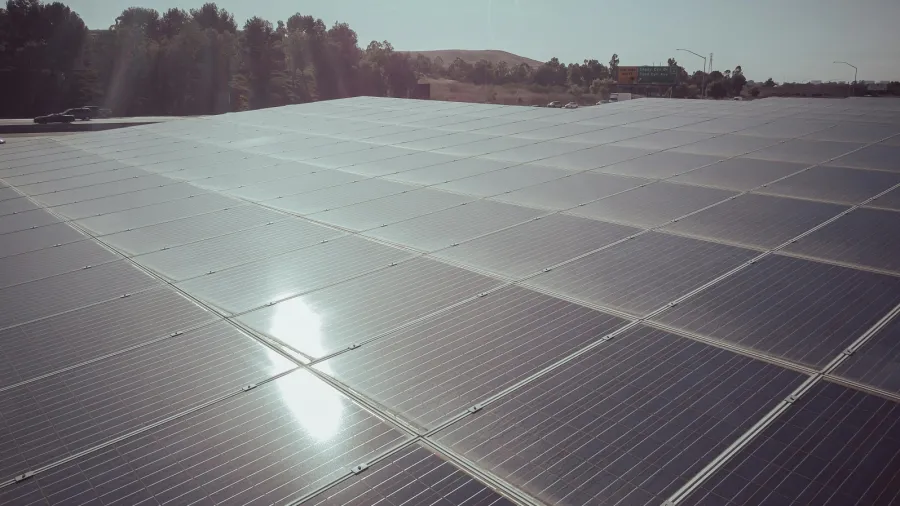
Malaysia told to integrate grids to quicken solar growth
Limiting solar penetration to the grid at 24% of peak demand could impede its expansion.
Malaysia boasts abundant solar energy promise, with 269 gigawatts (GW) of potential capacity, but the country should expand its grid to unlock its value, according to a policy analyst.
“Insufficient grid infrastructure in Malaysia may hinder the growth of solar because the grid is not flexible enough to accommodate the increasing solar power supply in the coming years,” Shabrina Nadhila, think tank Ember’s electricity policy analyst for Southeast Asia, told Asian Power.
The government has limited solar penetration to the grid at 24% of peak demand because large-scale energy storage is limited. Nadhila warned this could impede solar energy’s expansion.
Malaysia's yearly solar capacity has grown by 17% since 2019, but it was flat at 1.94 GW in 2023, Nadhila said, citing Ember data. It targets to increase the share of renewable energy in its power mix to 70% by 2050, from about 20% now.
Solar is expected to account for a majority share at 58% or 59 GW, with gas serving as a transition fuel, according to the state’s National Energy Transition Roadmap published last year.
The government seeks to use about 5% of the country’s solar potential or 14 GW by 2035, leaving a significant amount of solar resources untapped.
In a report she wrote for Ember this month, Nadhila said Malaysia should integrate the grids of the three regions to fast-track solar growth and enhance grid stability. Integration would let Sabah boost its power supply security, Sarawak to access more solar during the day and Peninsular Malaysia to use hydropower during evening peaks.
“Developing more domestic solar will help diversify the power mix and reduce the risks of fossil fuel supply shocks,” she added.
Three-quarters of the Southeast Asian country’s electricity demand comes from Peninsular Malaysia.
Nadhila noted that by using more of its abundant solar power resources, Malaysia could lower electricity prices and unlock the security benefits for its power sector.
Solar power could reliably meet Malaysia's daytime demand, while electricity needs during the nonsolar hours could be met by using hydropower and building more storage facilities over time, she said.
Whilst expensive, investing in energy storage solutions such as battery energy storage systems is critical. Malaysia’s twin-peak demand profile allows solar power to fulfil the daytime peak, whilst hydropower and battery storage could complement solar in meeting evening peak demand, the policy analyst said.
All these policies could allow Malaysia’s three regions to excel in their solar power adoption and contribute to the national power transition target, she added.
Faster net zero ambitions
To maximise the benefits of energy storage, the state should adopt a supportive policy framework. This includes tariff structures tailored for battery storage services and clear guidelines to encourage foreign investment.
“More incentives for battery storage adoption can attract these stakeholders to initiate the deployment of battery storage in the coming years,” Nadhila said.
More solar energy deployment coupled with a flexible grid will not only boost energy security but also lower prices. “Our analysis indicates that solar generation costs have fallen by 64% from 2016 to 2021,” she pointed out.
According to Nadhila's findings in the Ember report, the lowest auction rates for 30-50 megawatt (MW) solar plants in Peninsular Malaysia dove by 64% to $0.029 per kilowatt-hour (kWh) from $0.082 per kWh from the start of the Large Scale Solar programme in 2016 until 2021.
“These costs represent the price at which electricity is sold upon project commissioning, with projects from auctions held between 2016 and 2021 starting to generate electricity from 2017 to 2023,” she said in the report.
“This means solar generation costs dropped to $0.029 per kWh by 2023, making them 53% cheaper than fossil fuel generation costs, which stood at $0.063 per kWh,” she added.
Ember expects the shift to solar from fossil fuels to cut the electricity tariff on non-domestic customers by 38% in 2023, cheaper than the actual electricity tariff applied after the surcharge at $0.089 per kWh.
“With decreasing technology costs, solar power is cheaper than fossil fuels for meeting the growing electricity demand in the long run,” according to the report.
“By decoupling the power sector from fossil fuels, Malaysia can make significant progress in sustaining and enhancing electricity affordability for all, which is an integral part of the country’s vision in its National Energy Policy framework,” it added.
Nadhila said the 64% reduction in utility-scale solar generation costs presents a significant opportunity to speed up the country’s net zero ambitions.
A systemwide plan targeting solar and grid flexibility could help Malaysia accelerate its transition to clean energy, which would reduce its vulnerability to fuel price volatility and ease the risk of becoming a net importer of fossil fuels, she added.



















 Advertise
Advertise






